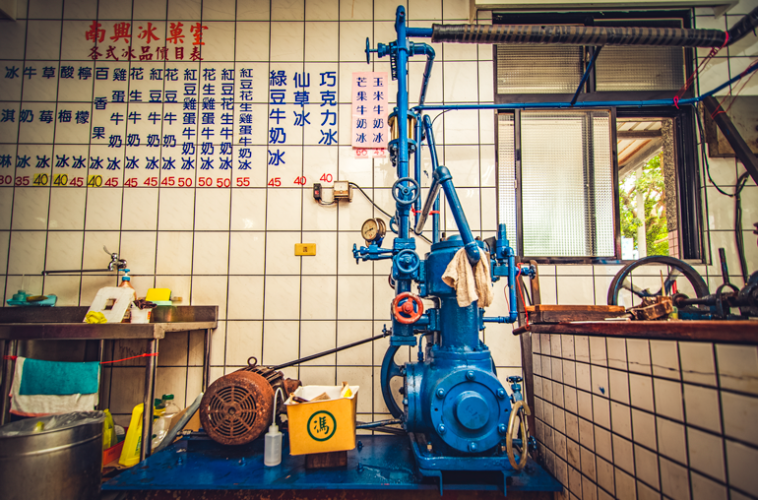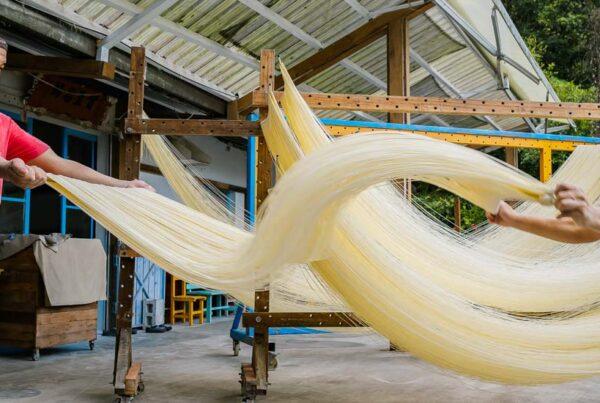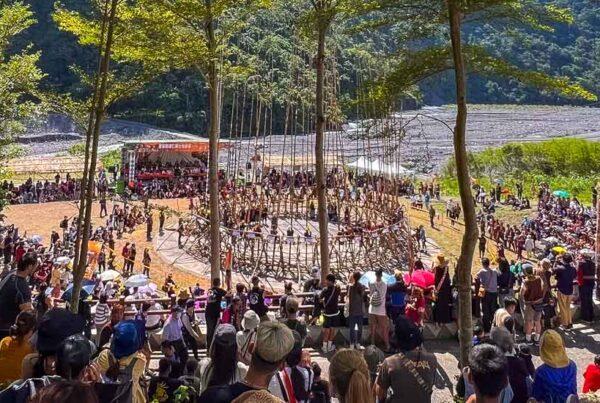An Amazingly Scenic Road Wedged between Mountains and Ocean
TEXT / OWAIN MCKIMM
PHOTOS / ASKA CHI
Asked to name the most scenic road in all of Taiwan, most locals and long-term expats will say “the Suhua Highway.” Loved by tourists for its sheer beauty, and dreaded in almost equal measure for its unpredictable conditions (rockfalls) and – at times – annoying users (gravel-truck drivers, especially), the road is a must-do for any road-trip aficionado who is looking for the best routes on the island.
Stretching from the fishing town of Su’ao in southeast Yilan County to Hualien City almost 120 kilometers to the south, the Suhua Highway is widely considered Taiwan’s most spectacular coastal road. Forced to the very edge of the island by the arresting coastal slopes of the Central Mountain Range, the highway offers travelers unparalleled views of Taiwan’s lapis-blue portion of the Pacific and verdant jungle-covered summits as it snakes south towards the spectacular Taroko Gorge.
Punctuating the route are a handful of characterful settlements (populated largely by members of Taiwan’s indigenous Atayal tribe), which lie in the alluvial plains created by stream and river water that has made its way from deep in the mountains to the ocean. Until very recently, the highway has been the only road connecting the coastal settlements between Su’ao and Hualien. However, prone to landslides and typhoon damage, it has been known for its dangers almost as much as for its scenic beauty.

As part of the Suhua Highway Improvement Project, three new, long highway sections have been built. These feature numerous tunnels and bridges, and will provide alternative routing through the mountainous inland region, avoiding the more perilous coast-hugging sections of the original highway. The first new section, between Su’ao and the village of Dong’ao, was opened in 2018. The other two are set to be opened before Chinese New Year in 2020. Drivers are now presented with a choice of roads, the old winding highway sections along the coast or the new and faster sections through the mountains. The opening of the most northerly inland section last year has made the coastal road down to Dong’ao far less crowded than it once was, and it can now be enjoyed at a leisurely pace without fear of speeding trucks and haste-frenzied motorists.
Nanfang’ao
Our journey begins on the Lanyang Plain (Yilan Plain), the vast triangular flatland in Yilan’s northeast, which is home to Yilan City as well as the popular tourist towns of Luodong (famed for its night market) and Jiaoxi (renowned for its hot springs). Tucked into the southeast corner of the Lanyang Plain is Su’ao, the starting point of the Suhua Highway. Choose the newer, inland prong of the highway and you’ll sweep quickly across gorge-spanning bridges and through mountain tunnels to coast-side Dong’ao. However, choose the older, more scenic coastal route and you’ll soon find yourself presented with a panoramic view of the bustling triple harbor of Nanfang’ao, Su’ao’s major fishing port.
The best vantage point can be found at the Nanfang’ao Observation Deck, located on the highway roughly 4km out of Su’ao. At around 140m above sea level, the platform affords visitors views of Neipi Beach and Nanfang’ao Bridge, as well as Su’ao’s naval harbor and the three artificial inlets, all a-clutter with fishing boats, that comprise Nanfang’ao Fishing Port. On clear days, the shape of Guishan (Turtle) Island can be glimpsed rising from the sea beyond the northeast end of the large bay in which the Su’ao/Nanfang’ao marine facilities are located.


In fact, though you may be eager to continue forging southward, stopping off in Nanfang’ao for a meal is a splendid idea. The restaurants that line the harbors specialize in seafood, and most offer set feasts of various sizes and prices (ranging from NT$1,000 to NT$3,000) designed to showcase the multifarious fruits of the sea that arrive daily on the fishing boats.

Dong’ao
From the Nanfang’ao Observation Deck, it’s an 11km drive along the winding coastal highway to Dong’ao, the next village on the route. On the way, stop at the small Dong’ao Tudigong Temple (dedicated to the Land God) for a stunning vista of Dong’ao Bay and the headlands beyond.


Dong’ao itself, though tiny, has more than enough charms to entertain you for several hours. Begin by working up a sweat with a short hike up Snake Mountain to gain the lie of the land. Stairs, followed by a concrete path, and finally a gravel track will bring you quickly to a mountaintop meadow flanked with electricity pylons.




From here you get a sweeping view of the new highway as it emerges from one of the mountain tunnels, of two railway bridges, one derelict and one in current use, and beside them the Dongyue Cold Springs, where you can pop in to cool off. Entry to the cold-spring park is free of charge, and the water, which bubbles up from the earth, remains at a refreshing 14~16 degrees Celsius year round.



After splashing about for a bit, on our recent Travel in Taiwan research trip we head to Dong’ao Bay for a stroll on its sand-pebble beach, at the south end of which is situated the tiny fishing enclave of Fenniaolin Fishing Harbor. If lucky, you may catch a fish auction, as boats laden with all kinds of sea life netted in the bountiful Kuroshio Current return to dock in the harbor and unload their catch.


Climb some stone steps at the far end of the harbor and, beyond, you’ll discover a hidden cove known as the Love Lock Beach, where you can lie on the pebbled shore and enjoy the splendid views or snorkel in the placid outcrop-enclosed waters.


Nan’ao
A further 10km from Dong’ao along the highway is the larger and livelier town of Nan’ao, which sits between two waterways inland from the coast. The trailhead for a short 2.2km hike along the old Qing Dynasty-blazed Chaoyang Trail that skirts the coastal cliffs east of the town can be found on the roadside just before the Chaoyang Fishing Harbor, while a drive to the south through fish farms and paddy fields dappled with egrets sees you to the Mystery Beach – a long stretch of grey sand with several sea caves cut into the beach-end cliffs.

Venture due west inland towards the mountains, on the other hand, and you’ll soon arrive at the trailhead for the Jinyue Waterfall – a magnificent 25m-high waterfall that can, unfortunately, only be reached by tracing up the Lupi Stream (river-tracing excursions to the falls can be booked through several local adventure groups based in Taipei). Casual visitors must content themselves with a stay at the paddling pools at the start of the trail – a lovely place for a picnic, a-flutter with dragonflies and butterflies of all shapes and colors. Only a little further upstream (if you’re willing to take your shoes off and walk through the knee-deep water) is an 8m-high mini-waterfall where the brave (or reckless) can get an adrenaline fix by riding over the fall’s lip and plunging into the deep pool below.


KLOOK:
River Tracing and Rock Diving Experience at Jinyue Waterfall
Returning to central Nan’ao we decide to do some refueling at the town’s most distinctive restaurant, Chili Hunter – a celebration of all things spicy. The owner, Ye Wu-xun, whose family are long-time producers of peeled chili – a favorite Taiwanese condiment – decided to both expand his horizons and indulge his love of chilies by importing specimens from around the world and planting them in Nan’ao. After browsing the restaurant’s chili products on the first floor – which range from mild Mexican-style salsas to sauces made from some of the world’s hottest chilies – we move to the second floor to order a hearty lunch of beef noodles topped with Trinidad scorpion peppers, peeled chili dumplings, silken tofu and century eggs garnished with crunchy peeled chili, and a chili beer (flavored with habanero) to wash it all down.







Chili Hunter (樸艷辣椒文創美食館)
Add: No. 276, Sec. 2, Suhua Road, Su’ao Township, Yilan County
(宜蘭縣蘇澳鎮蘇花路二段276號)
Tel: (03) 998-1828
Hours: Mon~Sun, 8am~5pm
Website: www.chilihunter.com.tw
For dessert, and to cool our tongues, we visit a Nan’ao institution, the Nanxing Ice Store, for some traditional Taiwanese iced refreshments. The owner, Aunty Huang, has been making iced desserts here for decades, and still makes them the traditional way, with a 50-year-old ice-cream maker – a great blue contraption that clatters and whirls away by her side. Huang’s specialty is Red-Bean Peanut Milk Egg Ice, three scoops of banana-infused ice topped with red bean, peanuts, a few good squirts of condensed milk, and a sunny raw egg yolk in the middle. We sit in what appears to be Huang’s living room (in one corner is a wooden sofa and TV set with a Taiwanese soap opera playing) and tuck in. The yolk, though perhaps an acquired taste, gives the dessert a wonderfully sticky quality and blends perfectly with the sweetness of the condensed milk, while the texture of the red bean and peanuts keeps the palate entertained until the very last spoonful.




Nanxing Ice Store (南興冰店)
Add: No. 420, Sec. 2, Suhua Road, Su’ao Township, Yilan County
(宜蘭縣蘇澳鎮蘇花路二段420號)
Tel: (03) 998-1171
Website: www.facebook.com/NanXingicestore/
Down to Taroko
Driving south from Nan’ao towards Hualien (the opening of the final two inland sections before 2020 will significantly relieve the traffic on this stretch), the coastal road remains magnificent. Beginning at the village of Heping, the Qingshui Cliff, a sheer face of gneiss and marble, rises almost vertically above the road to an average of 800 meters on one side, and drops precipitously to the sea on the other, accompanying the highway for over 20 kilometers. To observe the cliffs on foot, take a stroll down the Huide Trail (a now-unused 750m-long section of the highway that was closed after the opening of the Huide Tunnel), which allows you to take in the sheer cliffs and the clustered reef rocks in the ocean waters below unthreatened by speeding cars.

Continuing south, you’ll soon arrive at the village of Xincheng and the entrance to the world-renowned Taroko Gorge, where even more spectacular natural wonders await – though that, of course, is a subject for another article….
















